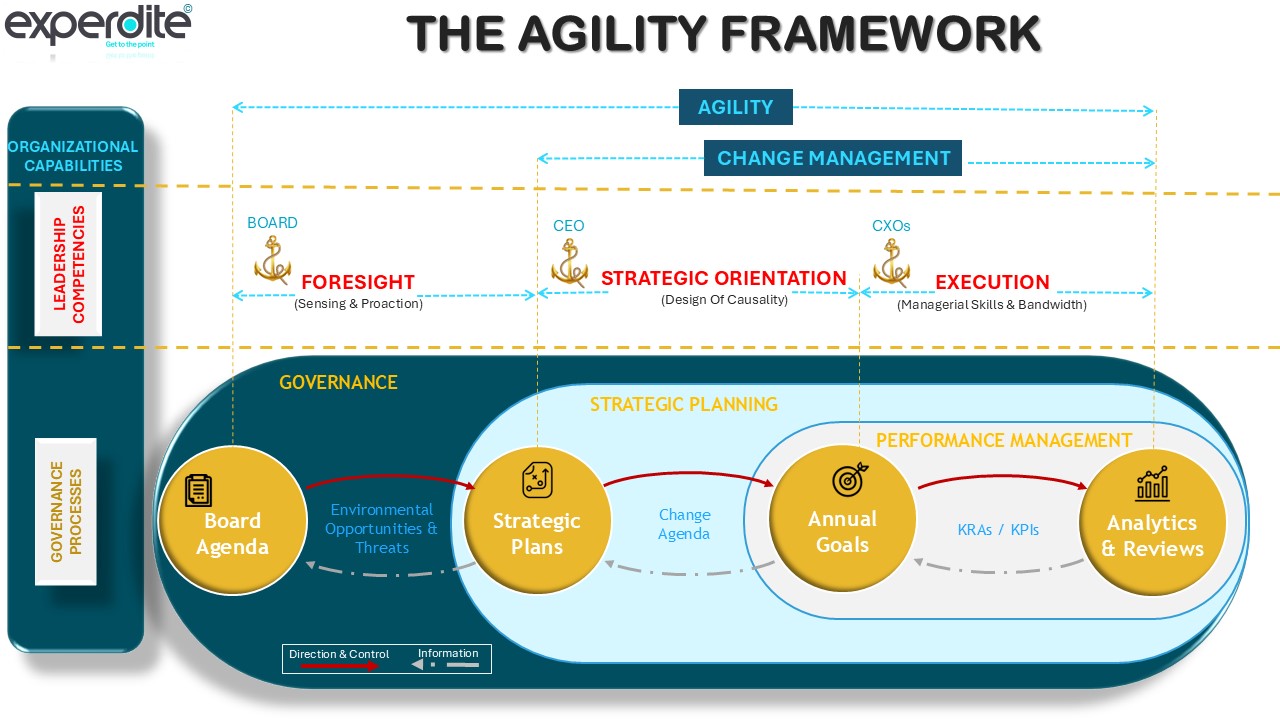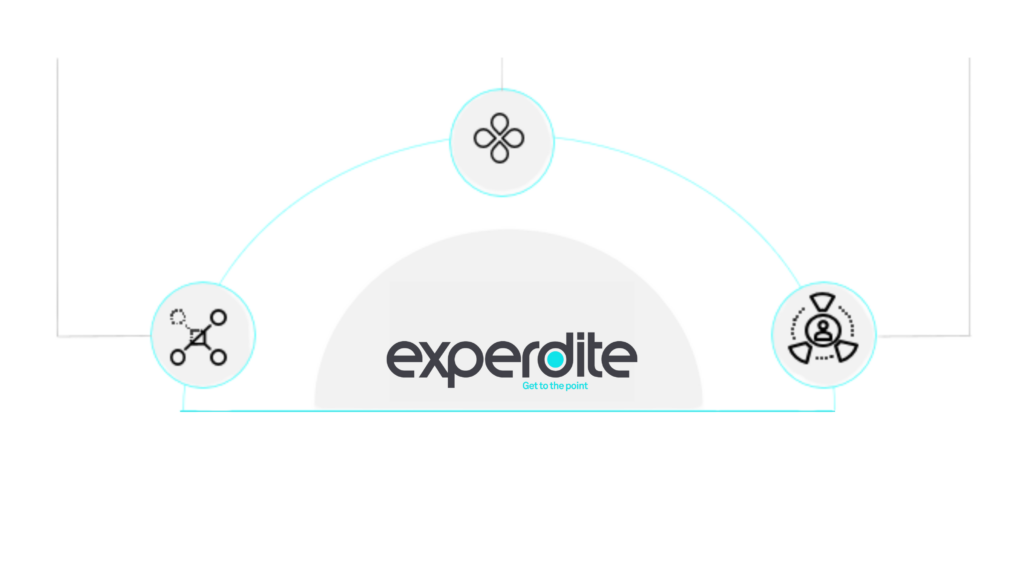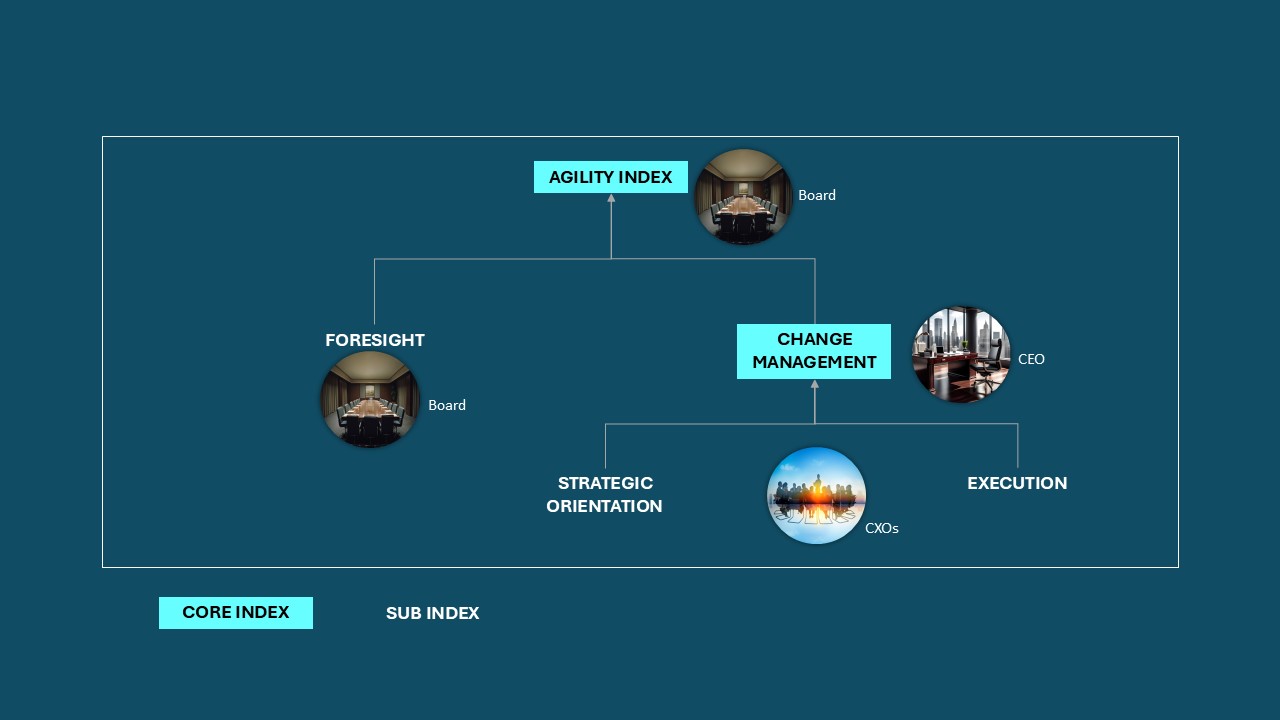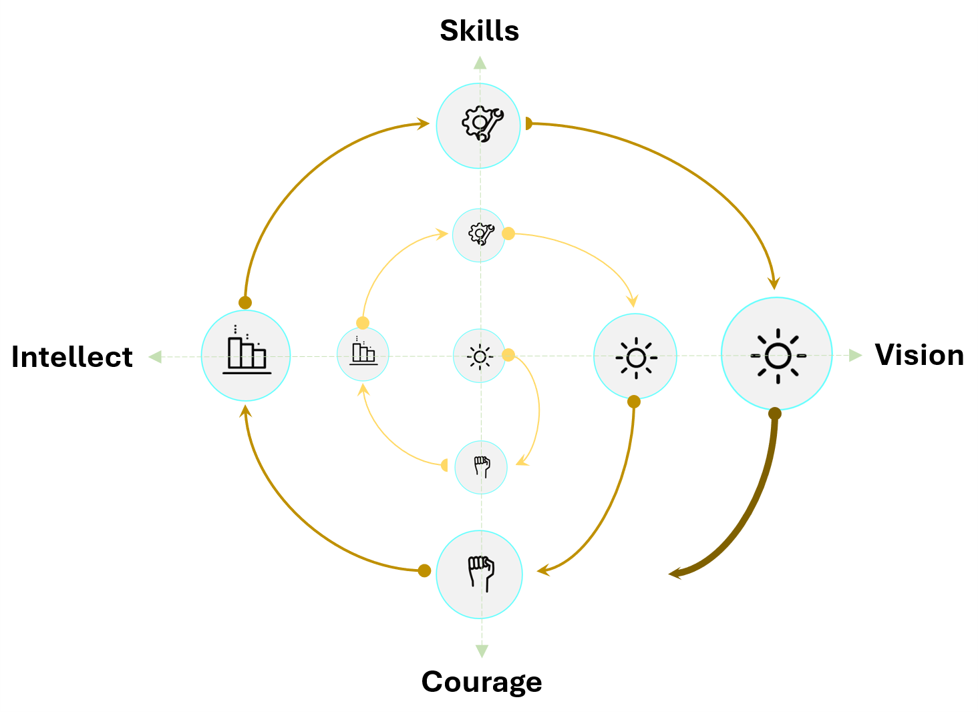The AGILITY report is built on a proprietary diagnostic model.

Experdite is a suite of three Organizational Capability Reports derived from historical financial statements of an organization.
I. AGILITY REPORT
Measures Governance capabilities in the form of two core and three sub indices
- Core indices : Agility and Change Management
- Sub indices –Foresight, Strategic Orientation and Execution
II. FORE FACTORS REPORT
Measures the four human dimensions or success factors that drive and impact enterprise value creation. These are :
- Vision
- Courage
- Intelligence
- Skills
III. ROLE IMPACT REPORT
Measures the relative impact of and the power balance between the three nodes of Governance
- Board
- CEO
- CFO

I. AGILITY REPORT
Agility Report measures Governance capabilities in the form of two core and
three sub-indices


Three sub-indices – Foresight, Strategic Orientation and Execution, capture the foundational competencies of the Experdite framework
Foresight
Foresight Index measures the Sensing and Proaction capabilities of the Board
It relates to constancy of purpose, Board diversity, alignment between Executive, Non-Executive and Independent Directors, transparency in Board conversations and effective Board Committees
Culturally, it also reflects the extent of ‘Openness’ amongst members of the Board and the effectiveness of Independent Directors
Strategic Orientation
Strategic Orientation Index measures the CEO’s ability to formulate strategic responses to environmental opportunities and threats and drive change
Culturally, it reflects the Authenticity of the CEO and the CEO’s effectiveness in strengthening Collaboration at the leadership level by breaking silos and encouraging peer-level accountability
Execution
Execution Index measures the CXOs’ abilities to implement strategic plans consistently
It also reflects the ability of Line Managers to hold each other and their teams accountable for their performance
Culturally, it points to Trust, Proaction and Meritocracy at the operating level
II. FORE FACTORS REPORT
Vision, Courage, Intellect & Skills, capture the four dimensions of human endeavour that drive enterprise value creation


Vision
Intensity of focus on capacity building for long term growth through capital raising
Vision is Ambition and Purpose combined. It reflects the commitment of the Board to stay invested to achieve its long term aspiration. It also reflects the Board’s confidence in the business and the capability of the Board to raise capital to achieve its vision.
Vision index reflects the intensity of focus and follow through on stated Vision, review and renewal of Vision at leadership levels
Higher the Vision index, the stronger the purpose and ambition to build an organization into perpetuity.

Intellect
Intensity of focus on commercial success through application of strategic thinking and commercial acumen
Intelliect refers to the ability to build and sustain profitable business models. It reflects a deep understanding of and control over the drivers of value creation.
Higher the Intellect index, greater the commercial acumen, greater the focus on product mix and pricing, stronger the competitive intelligence, stronger the internal controls, checks and balances, sharper the eye on cost structures.

Courage
Intensity of focus on market place success through customer centricity and product-market fitment
Courage is the boldness to take a bet on growth and compete in the marketplace. It is the fearlessness to try new sales and marketing approaches including new products, markets and variants take on competition. It also indicates the commitment to invest in building new capacities and capabilities required to ensure long term growth
Courage index reflects depth of consumer insight, market share focus and Product – Market portfolio choices.
It reflects both utilization of existing assets / capacities as also the foresight and commitment to build capacity for future growth.
Higher the Courage score , stronger is the drive and focus on growth, greater is the ability to scale up and deeper the talent pipeline in sales and business development

Skills
Intensity of focus on functional excellence through managerial skill building
Skills refers to the maturity level of managerial skills and bandwidth within the organization. It indicates commitment to high performance standards, eye for detail, continuous enhancement of people and process capabilities and a culture of meritocracy and innovation
Higher the Skills index, stronger the role and goal clarity in the organization, greater the stability and predictability of operating processes and stronger the focus on people and process capability development
III. ROLE IMPACT REPORT
The Role Impact report provides insights into the {relative impact} of the primary anchors of Governance viz., the Board, CEO & CFO
BALANCED
Well balanced role impact scores indicate equal effectiveness of the three anchors.
The more balanced the scores,
IMBALANCED
A skew towards one score indicates breach of an anchor’s role by another, dominance by one or lack of confidence/diligence/assertiveness in the other
The higher one of the score is
NEGATIVE
A negative score for one of the anchors indicates that the impact of the decisions & actions of the specific role holder conflicts with their designated role in the governance process.
Higher the negative score

